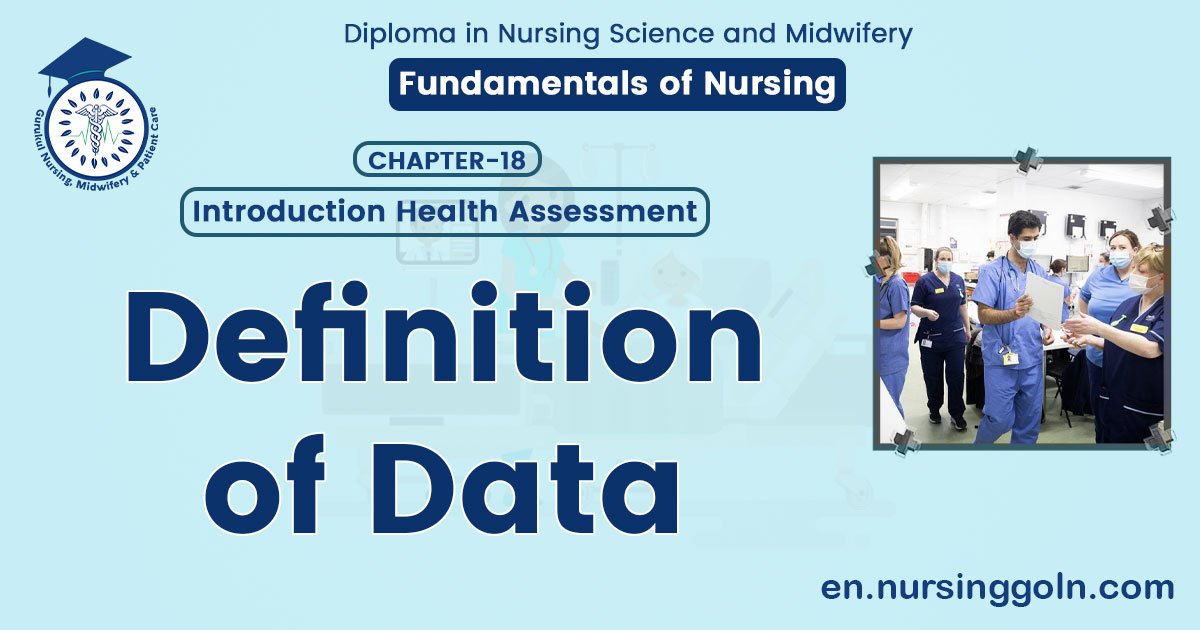Definition of Data – Nursing is a profession within the healthcare sector focused on the care of individuals, families, and communities so they may attain, maintain, or recover optimal health and quality of life. Nurses may be differentiated from other healthcare providers by their approach to patient care, training, and scope of practice. Nurses practice in many specialisms with differing levels of prescriber authority.
Many nurses provide care within the ordering scope of physicians, and this traditional role has shaped the public image of nurses as care providers. However, nurses are permitted by most jurisdictions to practice independently in a variety of settings depending on training level. In the postwar period, nurse education has undergone a process of diversification towards advanced and specialized credentials, and many of the traditional regulations and provider roles are changing.
Nurses develop a plan of care, working collaboratively with physicians, therapists, the patient, the patient’s family, and other team members, that focus on treating illness to improve quality of life. Nurses may help coordinate the patient care performed by other members of an interdisciplinary healthcare team such as therapists, medical practitioners, and dietitians. Nurses provide care both interdependently, for example, with physicians, and independently as nursing professionals.
Definition of Data
Data is a collection of facts, such as numbers, words, measurements, observations or even just descriptions of things.
Or
Data may be defined as “Information in raw or unorganized form (such as alphabets, numbers, or symbols) that refer to, or represent, conditions, ideas, or objects. Data is limitless and present everywhere in the universe.

Classification of Data:
A. On the basis of source
Primary data: Data that is obtained directly from an individual, object or phenomenon is called primary data.
Example:
- The census of 2001 is an example of collection primary data relating to the population.
- The collection of data about the health and sickness of a population is primary data.
Secondary data: Data that is obtained from outside source is called secondary data.
Example:
- Hospital records.
- Previous surveys.
- Professional journal etc
Tertiary data: Data that is obtained from text book
Another Classification of Data Related To Health Assessment:
There are mainly two types of data related to health assessment:
1. Subjective data.
2. Objective data

A. Subjective data (Symptoms):
Most of the subjective data are obtained through the health history.
It obtained from the client, family, significant others, health care team members and health records.
It represents the person’s description of his or her strengths, needs perceptions, feelings and experiences, that is, data that cannot be seen or felt by the observer.
B. Objective data (Signs);
- Objective data are what the nurse and other members of the health team gather directly by such methods as-
- Inspection.
- Palpation.
- Percussion
- Auscultation.
- Even olfaction
- The clients chart, diagnostic tests and other health team members also provide additional useful subjective and objective data.
- The majority of the objective data are obtained through physical examination of the client.
A. Subjective data: Subjective data referred to as symptoms or covert data, are apparent only to the person affected and can be described or verified only by that person. Subjective data include the client’s sensations, feelings, values, beliefs, attitudes and perception of personal health status and life situation.
➤ Examples of subjective data:
- Itching,
- Pain,
- Nausea
- Anxiety
- Feeling of worry etc.
B. Objective data: Objective data referred to as signs or overt data, are detectable by an observer or can be measured or tested against an accepted standard.
➤ Examples of objective data:
- Heart rate
- Blood pressure
- Respirations
- Wound appearance
- Ambulation description.

Sources of Data:
A. Primary sources of data:
- The primary source is always the client. When evaluating data sources, the nurse considers the client as the first point of observation hence the word primary.
B. Secondary sources of data:
- Family and significant other.
- Other health care professionals.
- Medical records.
- Interdisciplinary conferences, rounds, and consultations.
- Medical history, physical examination and progress notes.
- Results of diagnostic tests.
- Relevant literature. At hospital.
- At clinic.
- At rehabilitees center.
- At school/college/office.
C. Tertiary source:
- Tertiary sources are the clients’ record and other health care providers, such as other nurses, physicians and dentitions.
Read More…
